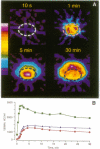Abstract
An experimental drug, 1-(1,3-benzodioxol-5-ylcarbonyl)piperidine, that facilitates glutamatergic transmission in brain after systemic administration was tested for its effects on the induction of long-term potentiation in the hippocampus of rats. Intraperitoneal injections of the drug markedly increased the degree and duration of long-term potentiation; similar results were obtained with an analogue of 1-(1,3-benzodioxol-5-ylcarbonyl)piperidine that was also found to improve retention of memory in a radial maze task and in an odor-matching problem. These results define tools for enhancing long-term potentiation in vivo and confirm an important prediction from the hypothesis that long-term potentiation is a substrate of memory.
Full text
PDF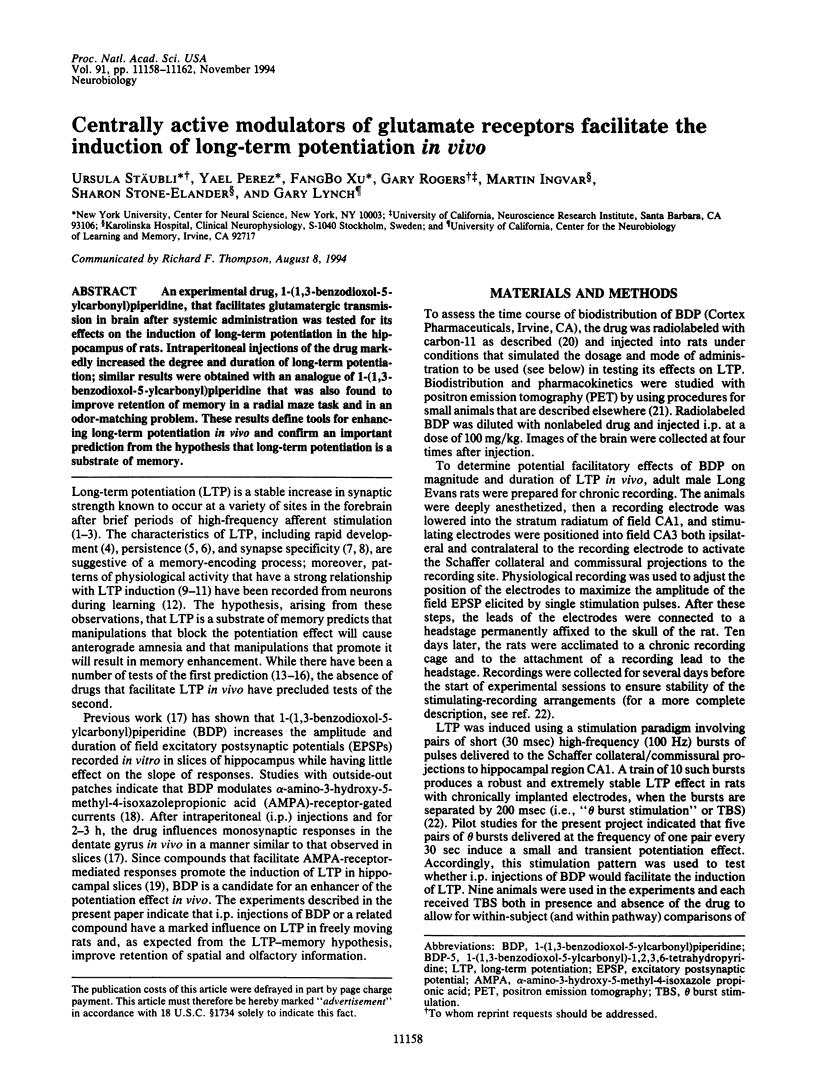
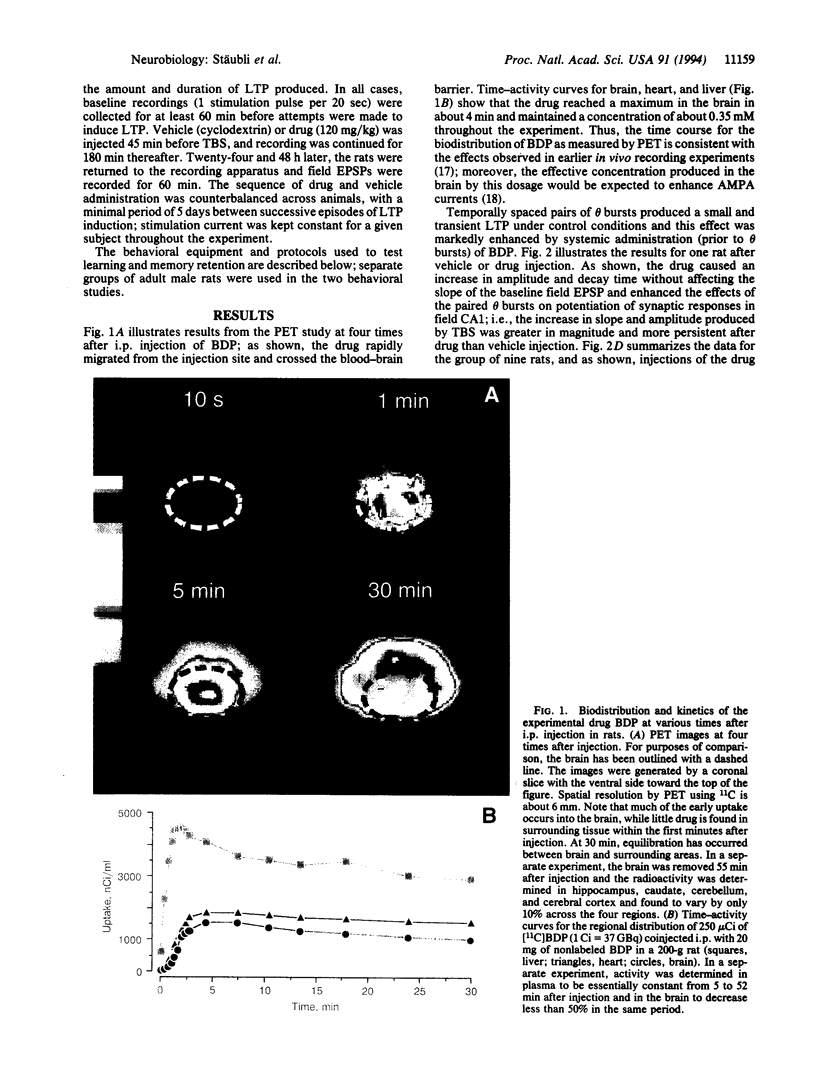
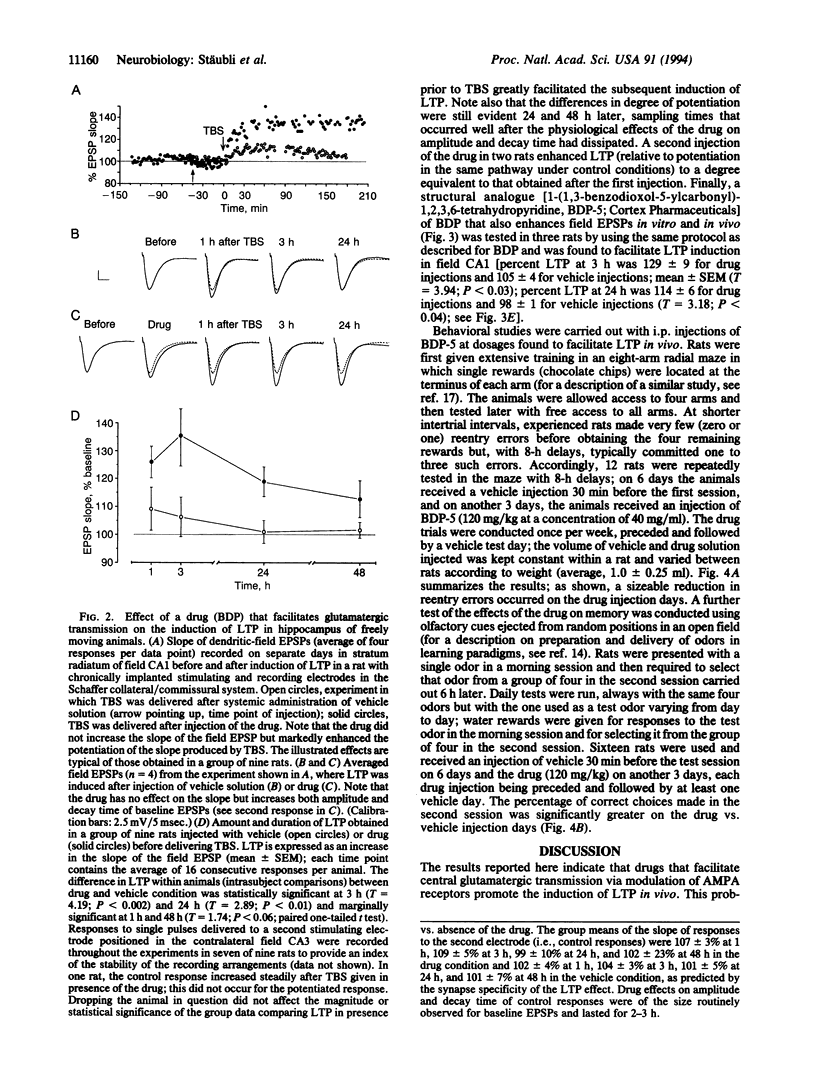
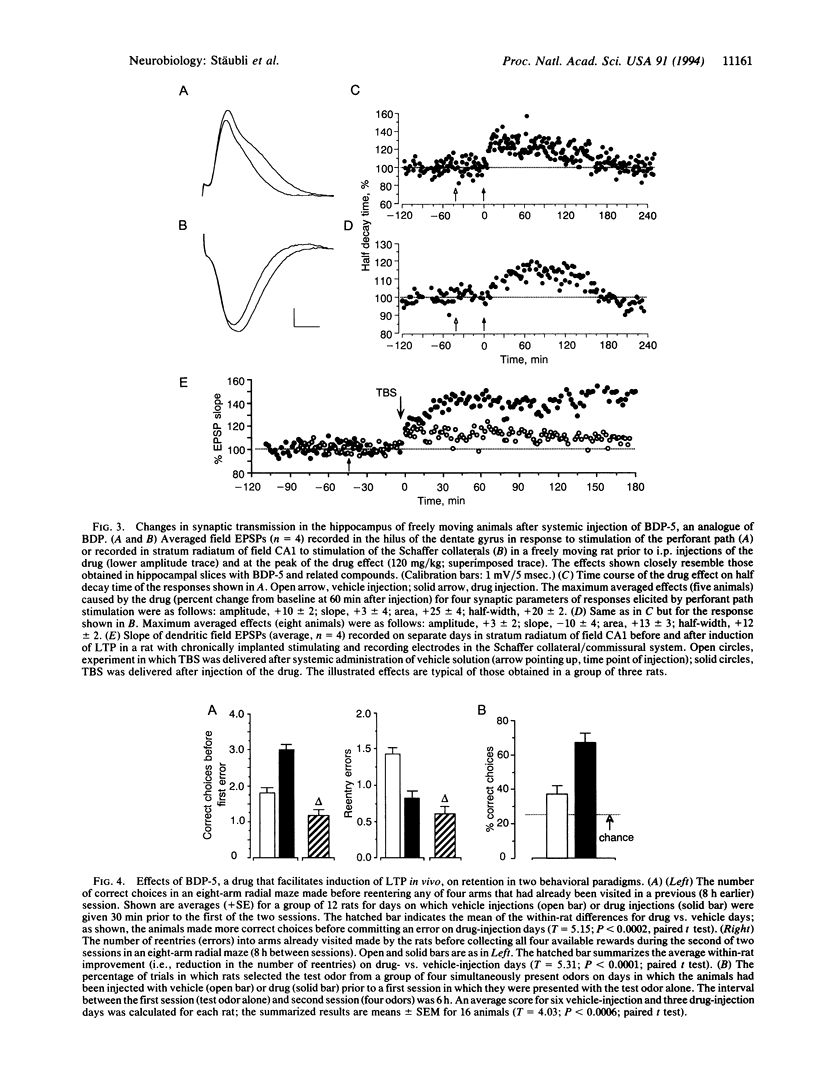
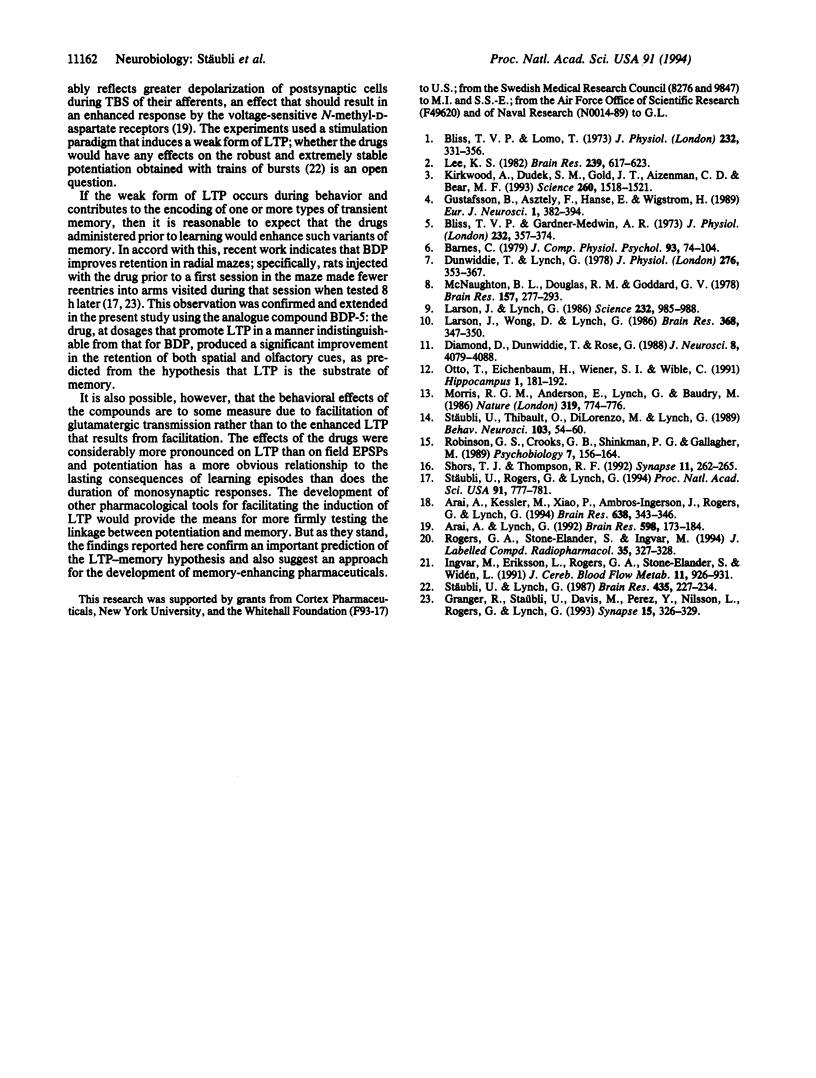
Images in this article
Selected References
These references are in PubMed. This may not be the complete list of references from this article.
- Arai A., Kessler M., Xiao P., Ambros-Ingerson J., Rogers G., Lynch G. A centrally active drug that modulates AMPA receptor gated currents. Brain Res. 1994 Feb 28;638(1-2):343–346. doi: 10.1016/0006-8993(94)90669-6. [DOI] [PubMed] [Google Scholar]
- Arai A., Lynch G. Factors regulating the magnitude of long-term potentiation induced by theta pattern stimulation. Brain Res. 1992 Dec 11;598(1-2):173–184. doi: 10.1016/0006-8993(92)90181-8. [DOI] [PubMed] [Google Scholar]
- Barnes C. A. Memory deficits associated with senescence: a neurophysiological and behavioral study in the rat. J Comp Physiol Psychol. 1979 Feb;93(1):74–104. doi: 10.1037/h0077579. [DOI] [PubMed] [Google Scholar]
- Bliss T. V., Gardner-Medwin A. R. Long-lasting potentiation of synaptic transmission in the dentate area of the unanaestetized rabbit following stimulation of the perforant path. J Physiol. 1973 Jul;232(2):357–374. doi: 10.1113/jphysiol.1973.sp010274. [DOI] [PMC free article] [PubMed] [Google Scholar]
- Bliss T. V., Lomo T. Long-lasting potentiation of synaptic transmission in the dentate area of the anaesthetized rabbit following stimulation of the perforant path. J Physiol. 1973 Jul;232(2):331–356. doi: 10.1113/jphysiol.1973.sp010273. [DOI] [PMC free article] [PubMed] [Google Scholar]
- Diamond D. M., Dunwiddie T. V., Rose G. M. Characteristics of hippocampal primed burst potentiation in vitro and in the awake rat. J Neurosci. 1988 Nov;8(11):4079–4088. doi: 10.1523/JNEUROSCI.08-11-04079.1988. [DOI] [PMC free article] [PubMed] [Google Scholar]
- Dunwiddie T., Lynch G. Long-term potentiation and depression of synaptic responses in the rat hippocampus: localization and frequency dependency. J Physiol. 1978 Mar;276:353–367. doi: 10.1113/jphysiol.1978.sp012239. [DOI] [PMC free article] [PubMed] [Google Scholar]
- Granger R., Staubli U., Davis M., Perez Y., Nilsson L., Rogers G. A., Lynch G. A drug that facilitates glutamatergic transmission reduces exploratory activity and improves performance in a learning-dependent task. Synapse. 1993 Dec;15(4):326–329. doi: 10.1002/syn.890150409. [DOI] [PubMed] [Google Scholar]
- Gustafsson B., Asztely F., Hanse E., Wigström H. Onset Characteristics of Long-Term Potentiation in the Guinea-Pig Hippocampal CA1 Region in Vitro. Eur J Neurosci. 1989 Jul;1(4):382–394. doi: 10.1111/j.1460-9568.1989.tb00803.x. [DOI] [PubMed] [Google Scholar]
- Ingvar M., Eriksson L., Rogers G. A., Stone-Elander S., Widén L. Rapid feasibility studies of tracers for positron emission tomography: high-resolution PET in small animals with kinetic analysis. J Cereb Blood Flow Metab. 1991 Nov;11(6):926–931. doi: 10.1038/jcbfm.1991.157. [DOI] [PubMed] [Google Scholar]
- Kirkwood A., Dudek S. M., Gold J. T., Aizenman C. D., Bear M. F. Common forms of synaptic plasticity in the hippocampus and neocortex in vitro. Science. 1993 Jun 4;260(5113):1518–1521. doi: 10.1126/science.8502997. [DOI] [PubMed] [Google Scholar]
- Larson J., Lynch G. Induction of synaptic potentiation in hippocampus by patterned stimulation involves two events. Science. 1986 May 23;232(4753):985–988. doi: 10.1126/science.3704635. [DOI] [PubMed] [Google Scholar]
- Larson J., Wong D., Lynch G. Patterned stimulation at the theta frequency is optimal for the induction of hippocampal long-term potentiation. Brain Res. 1986 Mar 19;368(2):347–350. doi: 10.1016/0006-8993(86)90579-2. [DOI] [PubMed] [Google Scholar]
- Lee K. S. Sustained enhancement of evoked potentials following brief, high-frequency stimulation of the cerebral cortex in vitro. Brain Res. 1982 May 13;239(2):617–623. doi: 10.1016/0006-8993(82)90538-8. [DOI] [PubMed] [Google Scholar]
- McNaughton B. L., Douglas R. M., Goddard G. V. Synaptic enhancement in fascia dentata: cooperativity among coactive afferents. Brain Res. 1978 Nov 24;157(2):277–293. doi: 10.1016/0006-8993(78)90030-6. [DOI] [PubMed] [Google Scholar]
- Morris R. G., Anderson E., Lynch G. S., Baudry M. Selective impairment of learning and blockade of long-term potentiation by an N-methyl-D-aspartate receptor antagonist, AP5. 1986 Feb 27-Mar 5Nature. 319(6056):774–776. doi: 10.1038/319774a0. [DOI] [PubMed] [Google Scholar]
- Otto T., Eichenbaum H., Wiener S. I., Wible C. G. Learning-related patterns of CA1 spike trains parallel stimulation parameters optimal for inducing hippocampal long-term potentiation. Hippocampus. 1991 Apr;1(2):181–192. doi: 10.1002/hipo.450010206. [DOI] [PubMed] [Google Scholar]
- Robinson N. M., Thomas M. R., Jewitt D. E., Wainwright R. J. Comparison of clinical outcome after elective and "bail out" coronary stent insertion. J Invasive Cardiol. 1995 Jul-Aug;7(6):156–164. [PubMed] [Google Scholar]
- Shors T. J., Thompson R. F. Acute stress impairs (or induces) synaptic long-term potentiation (LTP) but does not affect paired-pulse facilitation in the stratum radiatum of rat hippocampus. Synapse. 1992 Jul;11(3):262–265. doi: 10.1002/syn.890110311. [DOI] [PubMed] [Google Scholar]
- Staubli U., Lynch G. Stable hippocampal long-term potentiation elicited by 'theta' pattern stimulation. Brain Res. 1987 Dec 1;435(1-2):227–234. doi: 10.1016/0006-8993(87)91605-2. [DOI] [PubMed] [Google Scholar]
- Staubli U., Rogers G., Lynch G. Facilitation of glutamate receptors enhances memory. Proc Natl Acad Sci U S A. 1994 Jan 18;91(2):777–781. doi: 10.1073/pnas.91.2.777. [DOI] [PMC free article] [PubMed] [Google Scholar]
- Staubli U., Thibault O., DiLorenzo M., Lynch G. Antagonism of NMDA receptors impairs acquisition but not retention of olfactory memory. Behav Neurosci. 1989 Feb;103(1):54–60. doi: 10.1037//0735-7044.103.1.54. [DOI] [PubMed] [Google Scholar]



